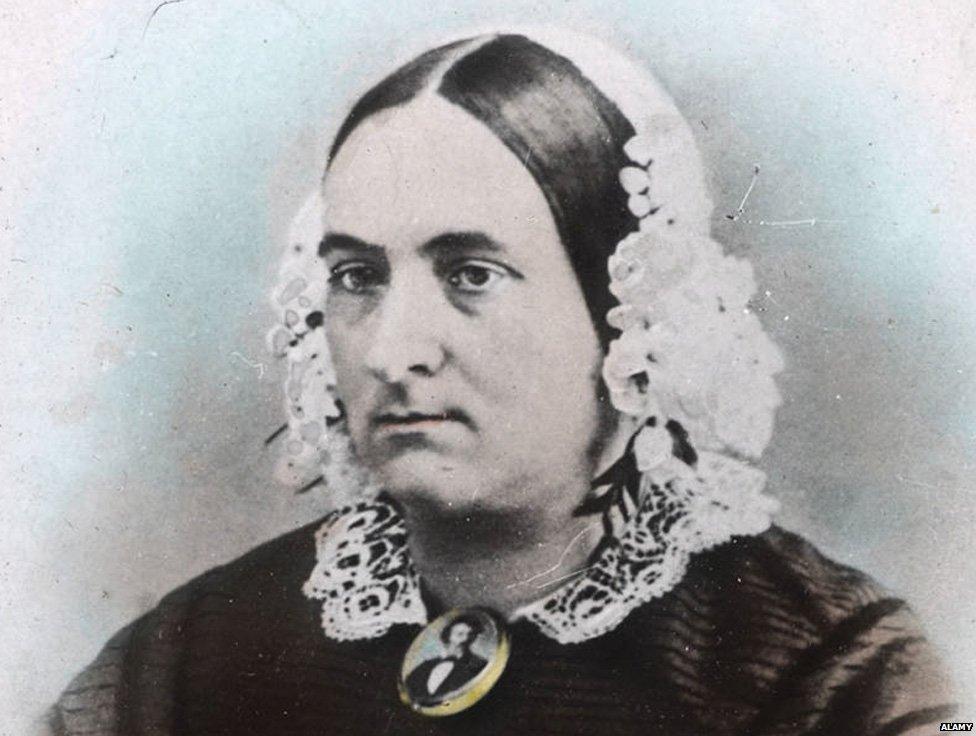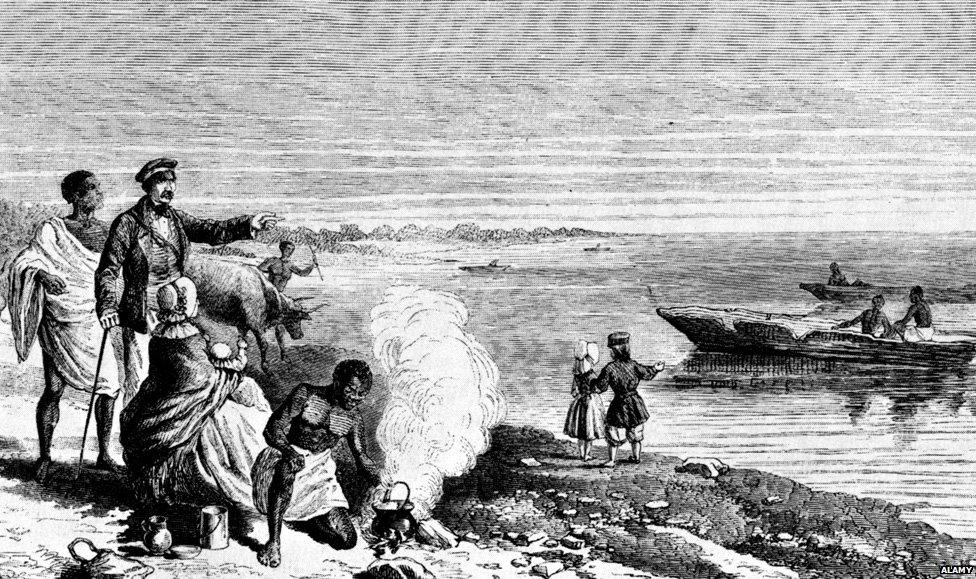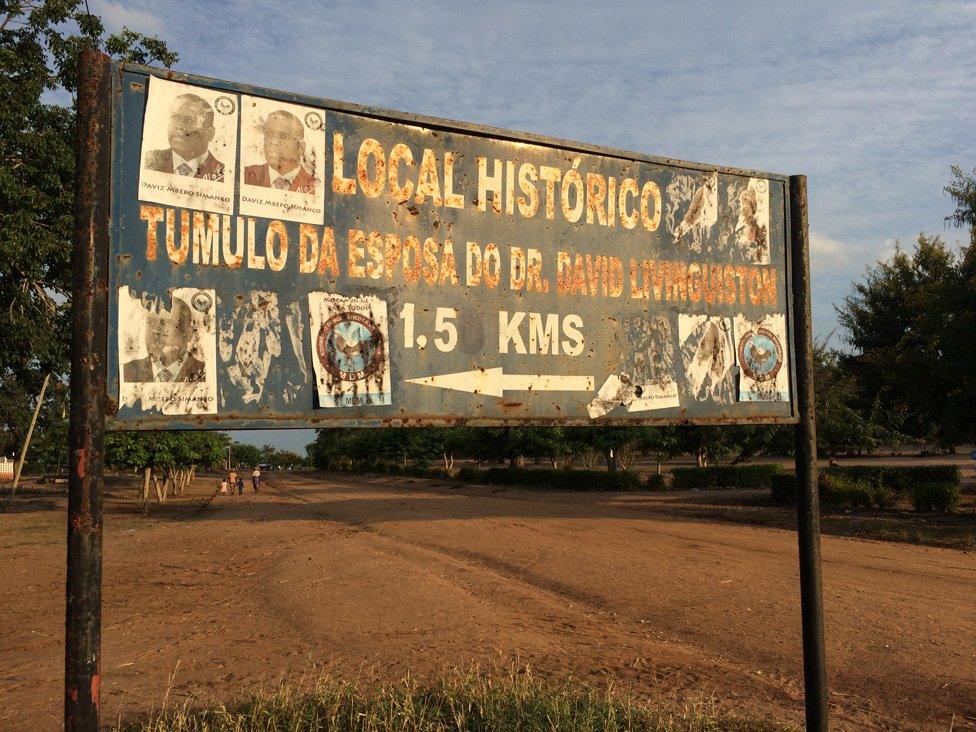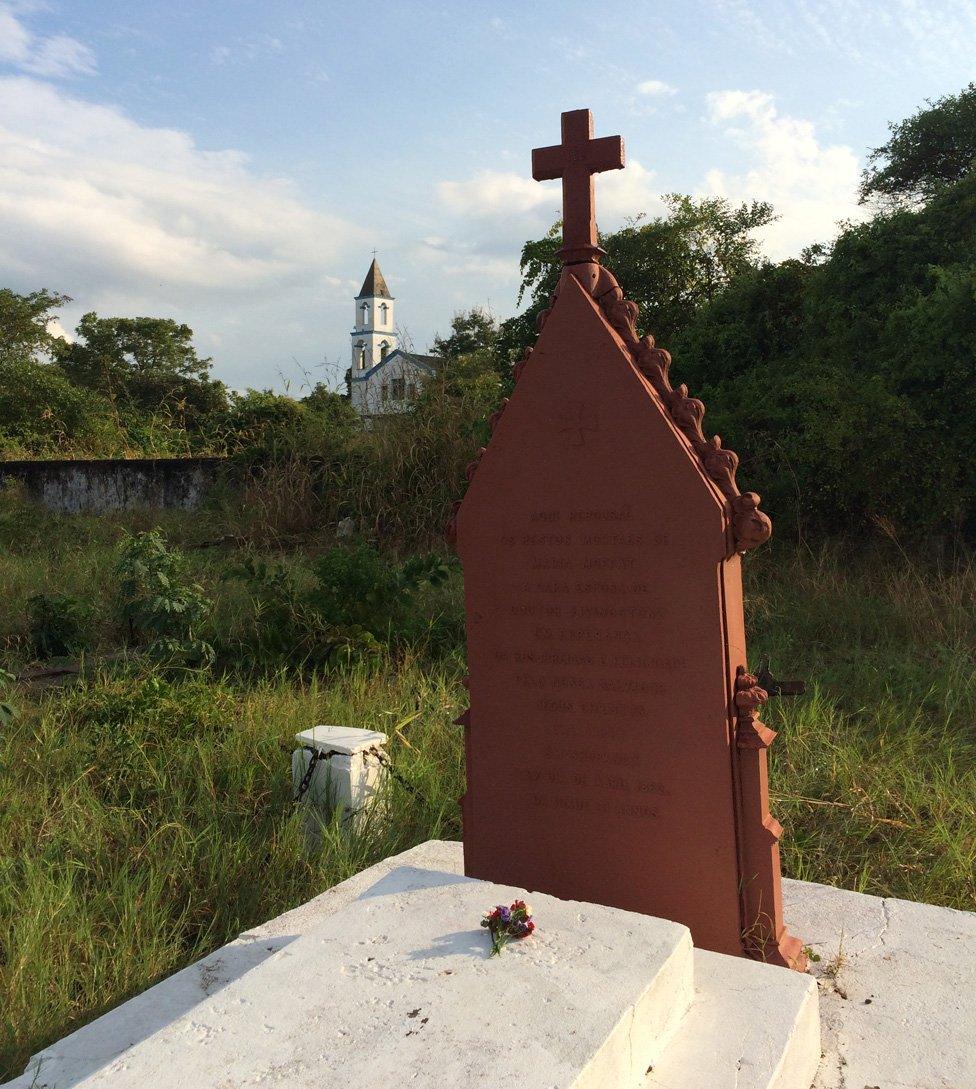Searching for Mrs Livingstone
- Published

Mary Livingstone crossed the Kalahari desert and endured extreme hardship on expeditions with her husband David, but her life was overshadowed by his fame. Her grave in Mozambique testifies to a forgotten story.
At first sight the border point at Vila Nova de Fronteira looked pretty impressive. At the end of a short dirt road through the no-man's-land that separates Mozambique from Malawi, stood a grand 1960s building with columns and elegant sloping roof. A flag flew from the top of a tower.
But on closer inspection it was just a shell, all the buildings here burned out during the civil war. Two trains rusted on the railway platforms behind the main customs hall. A shadow showed where the crest bearing the coat of arms of Portuguese Mozambique had once hung, chipped away after independence in 1975.
In the corner of the main hall, a large policeman sat at a desk, surrounded by ledgers. He sweated gently - there was no fan, no electricity. It was mid afternoon, but it seemed we were the first visitors to have passed through that day. A few cursory questions, and with a dramatic flourish he stamped both my passport and his ledger, the sounds ricocheting around the empty building. We were free to go.
Before we had started out, everybody I asked seemed to have a different view as to our best route across the Zambezi and onto Caia, the town nearest Mary Livingstone's grave. No one was quite sure what roads had survived the recent floods or which ferries were running.

Mary Livingstone (nee Moffat) 1821-1862

The Livingstones with three of their children in 1850, Lake Ngami
The daughter of a missionary, born in South Africa
Married missionary and explorer David Livingstone in 1845, with whom she had six children
Made the journey across the Kalahari desert twice
She endured hardship on expeditions with Livingstone - losing a child shortly after birth, and suffering a stroke
She died of malaria in 1862 while with her husband on the Zambezi
Sources: BBC History and The Telegraph, external

My guide book suggested Mutarara was the best place to head for - get there and maybe we could cross the Dona Ana Bridge. The Portuguese built what was once the longest railway bridge in Africa in 1934 - many of its forty spans were destroyed by Renamo fighters during Mozambique's long civil war. When peace came the Americans helped rebuild it, and then it became a road bridge.
We arrived just as dusk fell - and soon found the impressive structure, elegantly stretching out across the Zambezi. But any thoughts of driving across it were cut short by the blast of an air horn. Two new-looking red railway locos rumbled into sight. As they passed, I counted 43 trucks behind them. The line is now back in use, carrying coal from the mines of Tete to the Indian Ocean port of Beira. My guide book, I realised, was rather out of date.
"You might get a ferry if you drive south-west," said the woman running Mutarara's only hotel. It was a simple place - cockroaches climbed the wall in convoy and two green plastic containers filled with brackish water were provided for our ablutions. A local market stall provided dinner - chocolate biscuits - washed down with the remainder of a bottle of whisky I'd tucked into my backpack. But the beds were surprisingly comfortable. I slept well.
At dawn we set off in a south-westerly direction, using the sun and the compass app on my mobile phone to navigate. A minibus driver assured us we were going the right way. "It's a bad road though," he said. "About 50km." At the exact moment that the odometer ticked over the 50km mark, the road ended, on the banks of the Shire River.

Dugout canoes carried heavily loaded bikes and mopeds across the water. "There hasn't been a ferry for days," one of the boatmen told us. "But maybe it'll come later." I could see the craft on the other side, a simple pontoon, with thick guide wires slung across the river to draw it across. We moved the car to the edge of the bank. After half an hour or so people started to gather, using buckets to bail out the craft. Another hour, and it started moving, three men winding an old crank to draw it across. I asked the Captain, a teenager in yellow T-shirt what we should pay. I'd been warned that my white skin and obvious desperation might force the price up. "200 meticals," he announced, giving me an official looking ticket. £3.50.

The Shire River flows into the Zambezi - crossing that was almost too easy - a short drive over the brand new road bridge at Caia. By early afternoon we had reached the mission at Chupanga where Mary Livingstone is buried. A rusty metal sign on the road pointed us to the 'Tumulo da esposa Dr David Livingstone' - the grave of the wife of Dr Livingstone. In death, Mary still overshadowed by her domineering husband.
The rain started to pour down. We took shelter under a tree, and I read more about Mary's miserable life as the neglected wife of one of the world's most famous travellers. I had brought a small bunch of paper flowers with me. We lay them on the tomb, the red and purple and green of the dye bleeding in the rain, and leaving a delicate stain on the white grave.

How to listen to From Our Own Correspondent, external:
BBC Radio 4: Saturdays at 11:30. Listen online or download the podcast.
BBC World Service: At weekends - see World Service programme schedule or listen online.
Subscribe to the BBC News Magazine's email newsletter, external to get articles sent to your inbox.